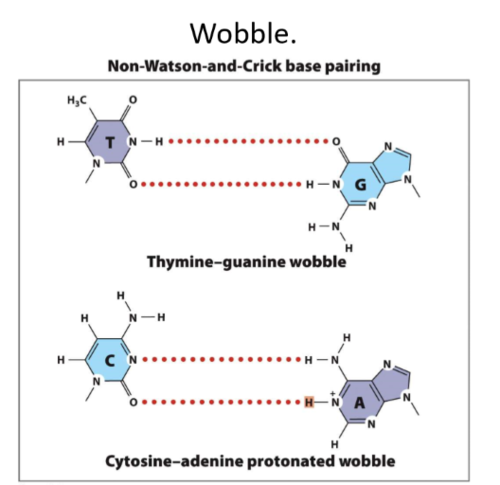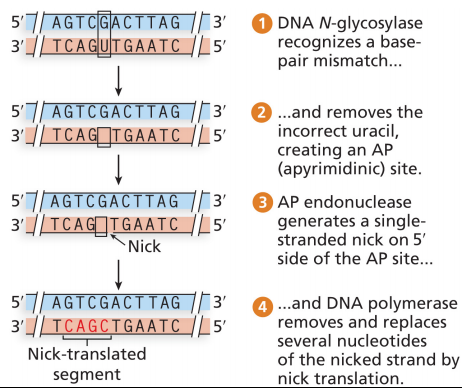DNA Mutation and Repair
3/22/24
What is Mutation?
Mutation- an inherited change in genetic information
If the sequence of DNA is changed then the function of a geene and expressed phenotype may change
a mutation can be inherited from cell to cell as a result of mitosis (somatic) or generation to generation from parents to offspring (germ-line).
Mutation is the source of all genetic variation, including disease and adaptations
 What Types of Mutations are there?
What Types of Mutations are there?
Chromosomal Mutations
Point Mutation (SNPs)
Repeat Expansions
Insertions/ deletions
Epigenetic “Mutations”
What Causes Mutations?
Induced: caused by environmental factor
UV light
Radiation
Chemical
Spontaneous: not external cause, naturally occurring errors; die to error from natural processes
Selfish genetic elements
Error in DNA repair
Error in replication
Anomalous base pairing and Spontaneous base changes causes point mutations
Spontaneous Mutations
Base Changes
Transversion mutation- exchange if nucleotides outside family, purine for pyrimidine
Transition mutation- exchange a purine for a purine or a pyrimidine for a pyrimidine (more frequent)
Anomalous Base Pairing
Incorporated error is an error not fixed→ these will become a replicated error (point mutation) SNP (can still be fixed but after second round of replication it will go undetected)
Chemical Changes
Rare bases
Deamination→ usually results in a transition mutation
Depurination
Base Excision Repair
(go back to slides and read this- pg 28)
Similar to the process that removes and replaces RNA primers during
DNA replication (DNA pol I is the polymerase)
Depurination: Loss of Purine
the nitrogenous base breaks off
Dna pol typically fixes this by just putting an A- example of transversion
Repeat Expansions
Example of a disease caused by this is Huntington’s Disease
these happen during DNA Replication
a structure is formed called a hairpin loop where the DNA strand kinda folds back on itself and base pairs with itself
Induced Mutations
Induced: mutations cause or induced by external factors (mutagens) usually chemical or environmental, which cause a nucleotide change
Chemicals that interact w/ DNA, including
• Artificial deamination
• Base analogs- Artificial, not naturally occurring base that can act like a thymine
• Intercalating agents- fits between the bases and causes breaks in the DNA strands (some found in cigarette smoke)
Induces indels and causes frameshift mutations
Radiation- Radioactive isotopes, X-rays, and UV
• Direct- UV rays that cause Pyrimidine Dimers
• Free Radicals- interact and react with the phosphate bonds of DNA and causing DNA breaks (the repair of this DNA break (non-homologous end joining) is in itself mutagenic)
How are Errors Fixed?
Random events happen and mutagens are constantly attacking your DNA- yet overall low mutation rate bc the existence of many repair mechanisms
Direct replacement during Replication:
DNA polymerase has a proofreading mechanism →
Exonuclease removal of mismatched base pair
Repair after Replication
Base Excision repair (BER) (used to repair small DNA lesions)
Nucleotide excision repair (used to repair UV damage
Mismatch repair
 Knowt
Knowt

